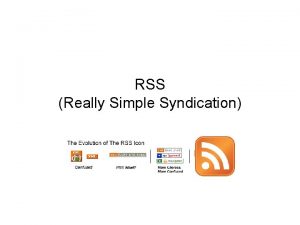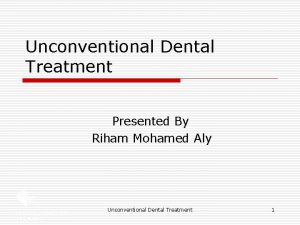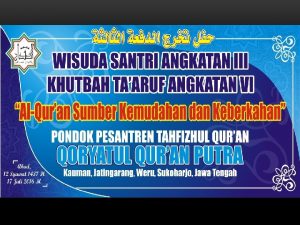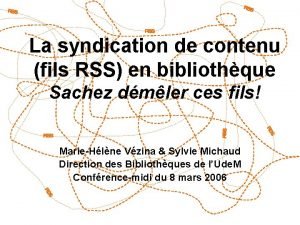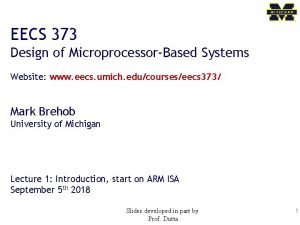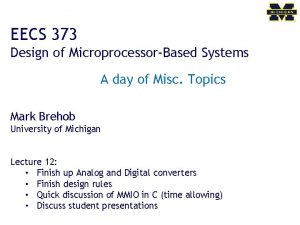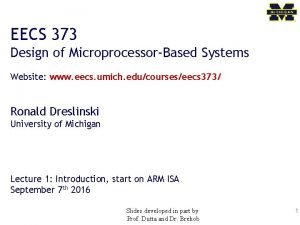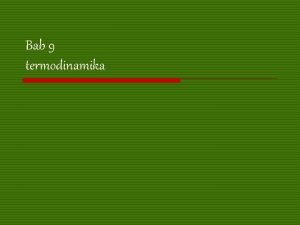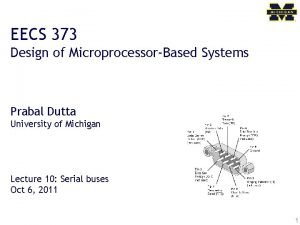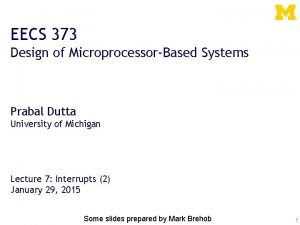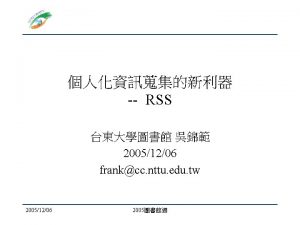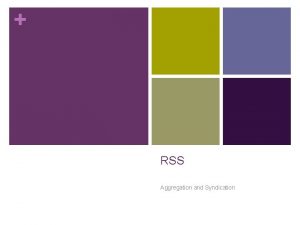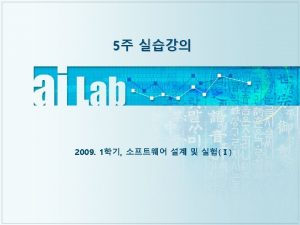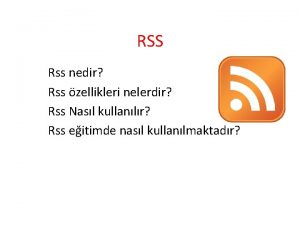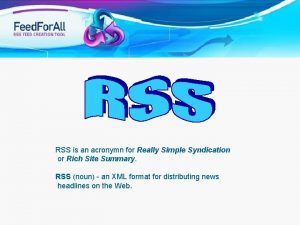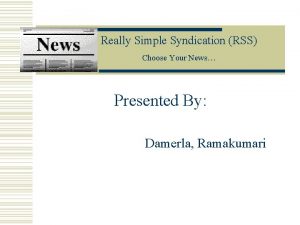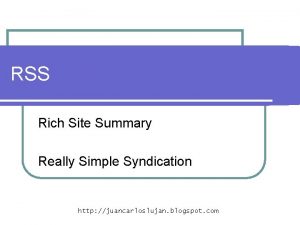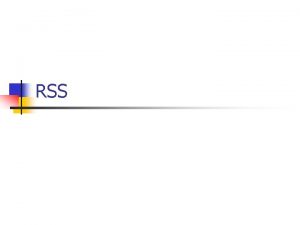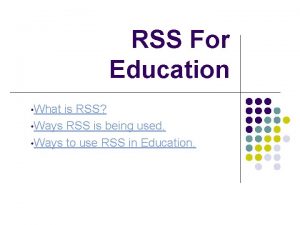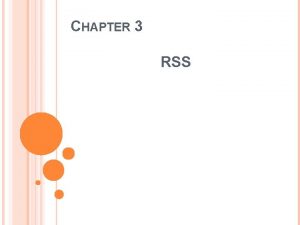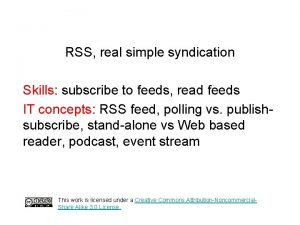RSS REALLY SIMPLE SYNDICATION Nisma Aly IS 373














- Slides: 14

RSS (REALLY SIMPLE SYNDICATION) Nisma Aly IS 373 4 -19 -2010

INTRODUCTION Information feeds started with the My Netscape Portal in 1995, which aggregated content from many sources in a portal that could be customized by the user. On the vast majority of websites, at that time, the information presented to a user was standardized for all users.

WHAT IS RSS? RSS(Really Simple Syndication) is the most popular newsfeed format, however it is not really a single format. RSS is a family of informally developed and competing formats that has forked into two opposing categories– the RDF fork and the RSS fork.

THE BIRTH OF RSS was developed as a part of the My Netscape project in January 1999 by Ramanathan Guha It was initially named RDF Site Summary (RSS) because it was an application of RDF which became known as RSS 0. 9 By the time the first specification was developed (version 0. 9), the RSS user community started to divide into two forks � RDF � RSS

THE RSS FORK Aimed to simplify RSS by removing RDF Since RDF was removed from RSS, the acronym made no sense “There is no consensus on what RSS stands for, so it’s not an acronym, it’s a name. ” -Dave Winer, Userland Software Winer went on to produce the RSS 0. 91 specification in July 2000

THE RDF FORK Wanted Netscape to use RDF in RSS RDF (Resource Description Framework) is a family of World Wide Web Consortium specifications originally designed as a metadata model Although RSS 0. 91 was clearly useful, it needed some improvement and additional metadata In December 2000, RSS 1. 0 was released– a new version of RSS with RDF back in

SPECIFICATIONS There � RSS � RSS � RSS is a total of 9 versions of RSS 0. 90, January 1999 0. 91 (Netscape), July 1999 0. 91 (Userland), June 2000 1. 0, December 2000 0. 92, December 2000 0. 93, April 2001 0. 94, Summer 2002 2. 0, August 2002 2. 0. 1, July 2003 (current version)

STATISTICS Feed distributions of the top web technologies

PRIVACY/SECURITY Dangers associated with RSS readers � automatically downloads information contained in the enclosure field regardless of its file type or source � Lack of filtering � No screening or authentication capabilities � Risk of infected files being distributed

RELIABILITY Opt-In – users elect which feeds which they subscribe to. Syndication – RSS is a defined standard for syndicating content, feeds extend reach Content – steady stream of fresh web content Aggregation – users can quickly scan multiple content streams and click on items of interest saving time Traffic – increased exposure and traffic for web sites

SOME USES OF RSS is useful for web sites that are updated frequently such as: � News sites � Companies � Calendars � Site changes � Schools � Technology

STATISTICS Proportion of sites using feed technologies.

HOT PROVIDERS BIGGEST MOVERS IN FEEDS RSS……………………. +1. 06% Feed. Burner………………. +0. 61% Live Writer Support…………. . . +0. 6% Atom……………………. +0. 43% Really Simple Discovery……………. . +0. 43% Pingback Support…………. . +0. 33%

CONCLUSION Thousands of sites use RSS, and more people understand its usefulness every day. With RSS, information on the internet becomes easier to find, and web developers can spread their information more easily. Although RSS is the dominant syndication format, other formats, such as Atom (post IETF), will prove to be of some competition in the future.
